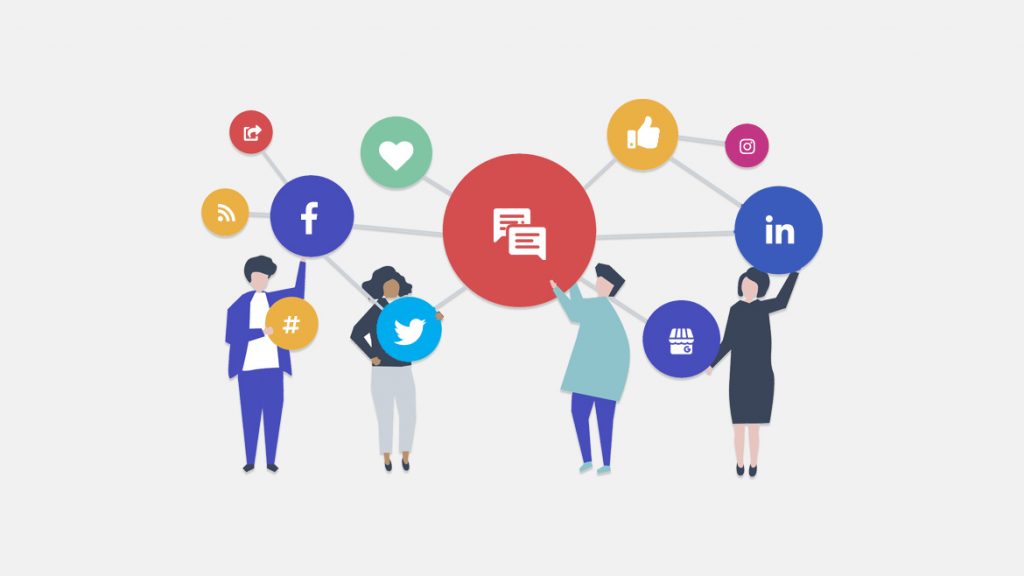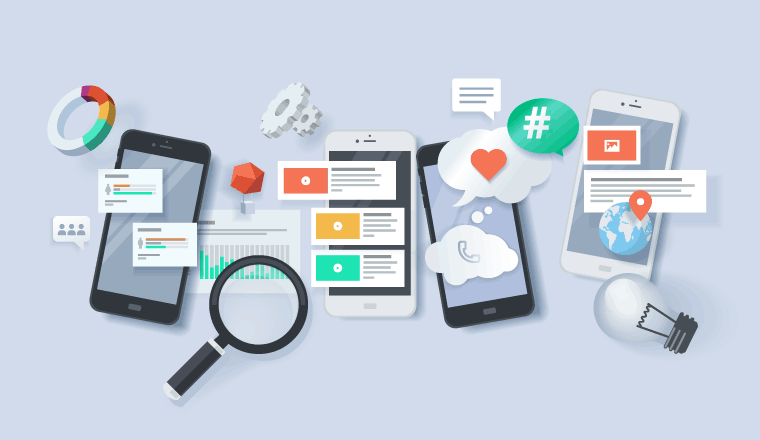In today’s digital age, brands face the challenge of staying relevant and competitive in a rapidly evolving market. Understanding consumer needs, preferences, and sentiments has become vital for businesses to drive growth and build meaningful relationships with their target audience. This is where brand social listening comes into play. In this article, we will explore the concept of brand social listening, its benefits, and how it can be effectively utilized to enhance business insights and engagement.
What is Brand Social Listening?

Brand social listening involves actively monitoring and analyzing social media channels, online forums, blogs, news sites, and other digital platforms for mentions, discussions, and sentiments related to a brand or its products/services. It goes beyond merely tracking brand mentions and hashtags by diving deep into the context and emotions behind these conversations. Through advanced technologies such as natural language processing and sentiment analysis, brands can understand the nuances of customer opinions, identify emerging trends, and gain a holistic understanding of their brand perception in the digital landscape.
Why is Brand Social Listening Important?
Brand social listening is crucial for several reasons. Firstly, it enables businesses to stay in touch with their target audience and gain insights into their preferences, needs, and pain points. By understanding customer sentiments and expectations, brands can tailor their offerings to meet the evolving demands of the market. Secondly, social listening provides an opportunity for proactive reputation management. By promptly addressing customer issues, complaints, or negative sentiment, brands can mitigate potential PR crises and maintain a positive brand image. Lastly, brand social listening helps in identifying new business opportunities, tracking competitor activities, and nurturing customer relationships, leading to increased customer loyalty and advocacy.
Key Benefits of Social Media Listening
Real-time Consumer Insights
Brand social listening provides businesses with real-time access to consumer insights. By monitoring online conversations, brands can gauge customer opinions, gather feedback, and identify emerging trends. This information is invaluable for developing new products, improving existing ones, and aligning marketing strategies to resonate with the target audience.
Competitive Analysis and Market Intelligence
Through brand social listening, businesses can gain a competitive edge by monitoring competitor activities, tracking industry trends, and identifying market gaps. By keeping a close eye on their competitors, brands can adapt their strategies, differentiate themselves, and seize opportunities to outperform their rivals.
Reputation Management
Brand reputation is crucial for business success. Social listening allows brands to proactively manage their reputation by monitoring and responding to customer feedback, complaints, or negative sentiment. By addressing concerns promptly and transparently, brands can demonstrate their commitment to customer satisfaction and maintain a positive brand image.
Customer Engagement and Relationship Building
Engaging with customers on social media platforms fosters a sense of connection and builds stronger relationships. By actively listening to customer conversations, brands can respond promptly, provide personalized support, and create a positive customer experience. This leads to increased customer loyalty and advocacy.
Identifying Influencers and Brand Advocates
Brand social listening helps identify influential individuals and brand advocates who are passionate about a brand. By identifying these advocates, brands can leverage their influence to amplify their messaging, drive engagement, and expand their reach within the target audience.
How to Implement Brand Social Media Listening

To effectively implement brand social listening, consider the following steps:
Define Your Objectives and KPIs
Clearly define your goals and key performance indicators (KPIs) for social listening. This will help you align your efforts and measure the impact of your brand listening initiatives accurately.
Choose the Right Social Listening Tools
Select appropriate social listening tools that suit your brand’s needs. These tools should enable comprehensive monitoring, sentiment analysis, and actionable reporting.
Monitor Relevant Social Media Channels and Online Platforms
Identify the social media channels and online platforms where your target audience is most active. Monitor these channels regularly for brand mentions, hashtags, and conversations related to your industry.
Analyze and Extract Actionable Insights
Leverage the data collected through social listening to extract meaningful insights. Analyze sentiment trends, identify emerging topics, and discover opportunities to improve your brand’s products, services, or customer experiences.
Respond and Engage with Your Audience
Engage with your audience by responding to their comments, queries, and feedback. Show genuine interest, provide helpful information, and foster a sense of community around your brand.
Best Practices for Effective Brand Social Listening
To maximize the benefits of brand social listening, consider the following best practices:
Monitor Keywords, Hashtags, and Mentions
Identify relevant keywords, hashtags, and brand mentions to track. This will help you capture a comprehensive view of conversations related to your brand.
Track Competitor Activities
Monitor your competitors’ social media activities to gain insights into their strategies, offerings, and customer perceptions. This information can guide your own brand’s decision-making process.
Segment and Analyze Data for Targeted Insights
Segment the social listening data based on demographics, geography, or other relevant factors to derive targeted insights. This allows for personalized marketing strategies and a better understanding of specific customer segments.
Leverage AI and Natural Language Processing (NLP) Tools
Utilize AI-powered tools that employ natural language processing (NLP) to automate the process of sentiment analysis, data categorization, and trend identification. This saves time and enhances the accuracy of your social listening efforts.
Integrate Social Listening with Other Marketing Efforts
Integrate social listening insights with other marketing efforts to create a cohesive and customer-centric strategy. Use the data to refine your content marketing, social media advertising, and customer engagement initiatives.
Challenges and Limitations of Social Listening

Despite its numerous benefits, brand social listening also faces certain challenges and limitations. These include:
- Data Overload: The abundance of data available through social listening can be overwhelming. Brands need to establish clear objectives and employ advanced analytics tools to filter and extract actionable insights effectively.
- Sarcasm and Context: Sentiment analysis algorithms may struggle to accurately interpret sarcasm or understand the context of a conversation, leading to misinterpretation of sentiments.
- Privacy Concerns: Brands must be mindful of privacy regulations and ensure that they handle customer data ethically and securely.
Future Trends in Social Media Listening
Brand social listening is continuously evolving, driven by advancements in technology and changing consumer behaviors. Some future trends to watch out for include:
- Artificial Intelligence and Machine Learning: AI and machine learning algorithms will play a more significant role in automating social listening processes, improving sentiment analysis accuracy, and generating actionable insights.
- Multilingual Social Listening: With businesses operating globally, multilingual social listening will become increasingly important to capture conversations and sentiments across diverse languages and cultures.
- Integration with Voice Assistants: Social listening will extend beyond text-based platforms as voice assistants gain popularity. Brands will need to adapt their social listening strategies to include voice-based conversations and sentiments.
Conclusion
In conclusion, brand social listening has become an indispensable tool for businesses to thrive in the digital landscape. By harnessing the power of social media conversations and online discussions, brands can gain valuable insights, engage with their audience, and make informed decisions to drive growth. To experience the benefits of brand social listening firsthand, we invite you to request a demo from Aim Technologies.
FAQs
What is the difference between social listening and social monitoring?
- Social listening involves actively analyzing and interpreting the sentiments and context behind social media conversations, while social monitoring focuses on tracking brand mentions and keywords without diving deep into the underlying emotions and opinions.
How can brand social listening help in crisis management?
- Brand social listening helps in crisis management by enabling brands to detect and address negative sentiments or complaints promptly. By responding effectively and transparently, brands can mitigate potential crises and protect their reputation.
Is brand social listening applicable only to large businesses?
- No, brand social listening is relevant for businesses of all sizes. It provides valuable insights into customer preferences, industry trends, and competitor activities, irrespective of the brand’s scale.
Can social listening be automated?
- Yes, social listening can be automated using AI-powered tools and algorithms. Automation saves time, improves efficiency, and enables brands to monitor and analyze vast amounts of data in real time.
How can social listening be used for product innovation?
- Social listening helps in gathering customer feedback, identifying pain points, and understanding emerging trends. By analyzing these insights, brands can develop new product features or refine existing ones to meet customer needs and stay ahead of the competition.


